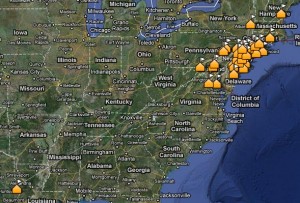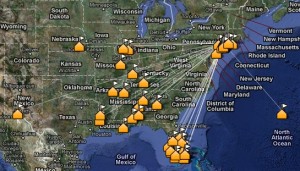The ARRL web site has been redesigned after a very long development cycle and a couple of unsuccessful launches. Now I am typically much more about content then I am about presentation and I would rather have an effective presentation and efficient navigation and search on a site then pretty colors, rollovers and eye candy, especially on a site that I consider a resource site such as the ARRL web site.
When the latest launch of the site was unveiled on Tuesday April 13th I started to find some issues, all of which I have reported to them via their Contact page. Before I speak about what I don’t like, I do like the color scheme as it makes the site very modern. I do like the larger font – even at 46 I can appreciate it. I think some of the new personalization allows or will allow for a more engaging site.
Below are some of the more frustrating items I’ve run into.
The site login is probably the biggest problem I’ve encountered. The old site used to leave you logged in session after session and that was fine. The new site is logging folks out quickly and definitely whenever the browser is closed and re-opened and you need to re-enter your id (call sign) and password. In the old site it was a bit less relevant because there wasn’t a lot of personalization but as this site provides more personalization including feeds on the front page, if you are logged out you don’t see the feeds. So the decision, if it was a conscious decision, to time folks out is a bad decision and needs to be changed. If they dont’ want to default it to persistent, then allow the user to specify how long to persistent the login.
The site seems to have an abundance of +/- spots to collapse show various sections. There isn’t enough content to make it worthwhile. It also isn’t persistent so collapsing a given section and refreshing the page expands all the sections again. It seems a needless feature as it exists today on the site. The site is also very click intensive in that I seem to have to click multiple times to actually get to the content. As an example, if I wanted to find the latest Contest Update newsletter on the old site I could get it I think right off the main nav or at most 2 clicks. Now on the new site, you click On the Air main link, then click on Contests then click on Contest Information and then click on Contest Publications then on Contest Update Newsletter and THEN click on Contest Update Issues. That is 6, yes 6 clicks. Yes, you can make it a site favorite so it is in your favorite drop-down at the top of the page, but you should never have to click that much and because you need to log in over and over it minimizes the benefit of favorites.
I’ve found a few instances where the content is missing or placeholder text is still displayed. With how long it took to launch, you think all the main subject pages would have relevant content.
Search results are showing the title only. No section/context/description and lots of space between each result. Results also aren’t good. Doing a search for Field Day Locator doesn’t return the page http://www.arrl.org/field-day-locator . Doing a search just for Field Day doesn’t even show http://www.arrl.org/field-day . Performance is also sub-par and I don’t know if it’s just search or overall site performance. But worse then slow performance is poor results. The site currently fails on both accounts. The magazine search seems to be returning relevant results. But magazine search isn’t listed in the main search drop-down and it seems to be many clicks and hunting and pecking to find it.
The contest calendar page at http://www.arrl.org/contest-calendars-events allows for you to move between months. Every time you go to the next month it scrolls back up to the top of the page. If they are refreshing the entire page as it seems they are, they should use an anchor tag to move the page to where the calendar is at the top of the page.
I’ve found a few broken links throughout the site. There are free downloadable programs that would go through an entire site and find broken links. There’s no reason that shouldn’t have been done here.
The Field Day Locator page looks like it was reset and all the info is gone. At least our clubs info isn’t there and when the site was first launched and I went to the page there were 3 sites listed.
At the top of many pages is a large image and often multiple images which will scroll through. The current delay is way too long. It should scroll through the images much quicker and either continue to cycle or go back to the 1st image and stay there. No one will stay on any page long enough to see all the images so if they are relevant enough to highlight, they should scroll through them much quicker.
The license test session page is messed up too. It shows “no walk-ins” for all tests. That isn’t the case so something isn’t right there. Our club has a test session on 4/16. If I search for test sessions in the Hudson Division or Northern NJ it doesn’t show up. The zip code isn’t completely accurate for our listing which is possibly the cause, though I don’t know if their searches by division/section using zip code which might possibly be the cause. The hamfest listing for our clubs upcoming hamfest is listed properly but there isn’t much info shown such as hours, cost, etc. I’m pretty sure the old site had more info.
I’m sure you’ve found some of your own annoyances and I’m sure I’ll find more. Hopefully they will get things buttoned up quickly, at least for the more important items such as login, testing and hamfest info and the poor search.
73,
K2DSL


